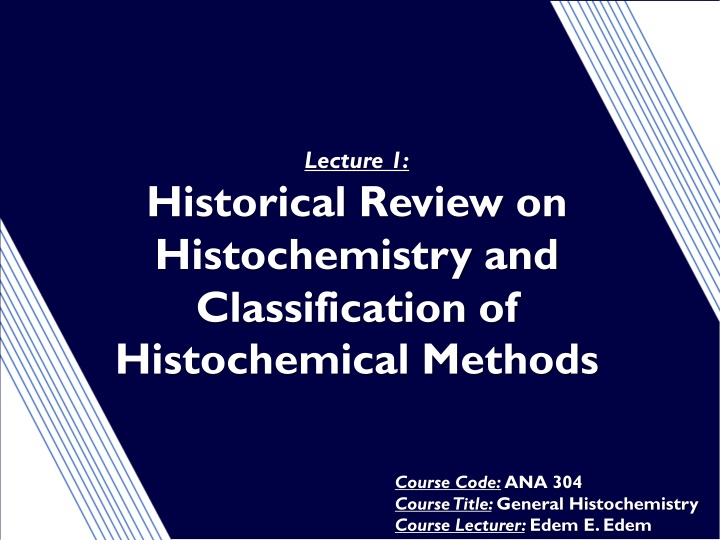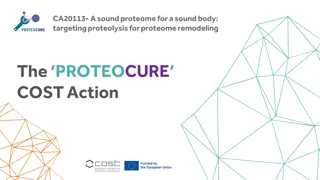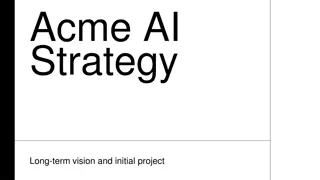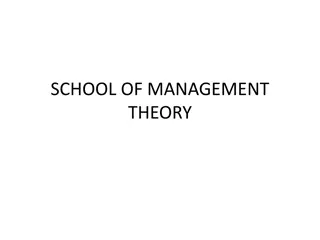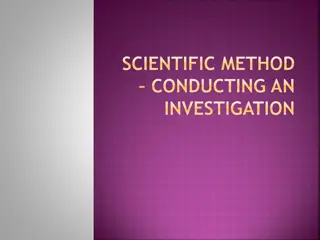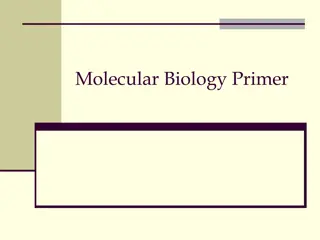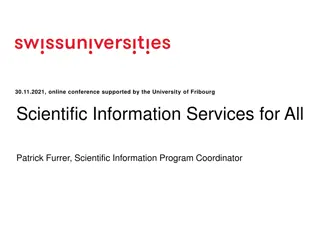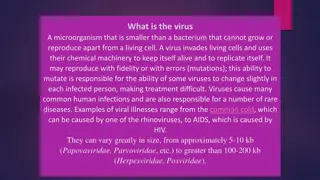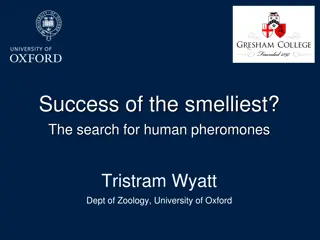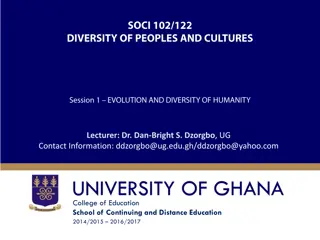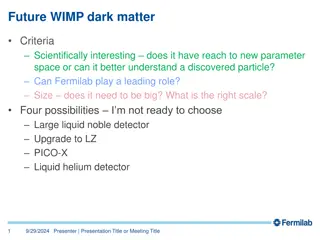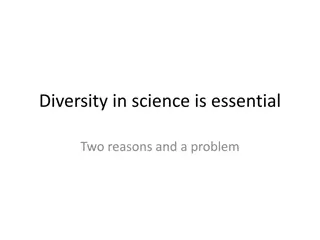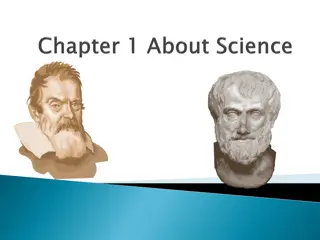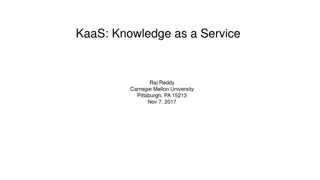Evolution of Histochemistry: A Journey Through Scientific Breakthroughs
Delve into the historical review of histochemistry, exploring its roots in the assessment of chemical compounds within cells and tissues using stains and dyes. Uncover the classification of histochemical methods, from chemical to biological approaches, and gain insights into the development and goals of this interdisciplinary field. Discover the techniques and methodologies employed in general and special histochemistry, encompassing diverse organ systems. By the end, grasp the essence of histochemistry as a marriage between biochemistry and histology.
Download Presentation

Please find below an Image/Link to download the presentation.
The content on the website is provided AS IS for your information and personal use only. It may not be sold, licensed, or shared on other websites without obtaining consent from the author.If you encounter any issues during the download, it is possible that the publisher has removed the file from their server.
You are allowed to download the files provided on this website for personal or commercial use, subject to the condition that they are used lawfully. All files are the property of their respective owners.
The content on the website is provided AS IS for your information and personal use only. It may not be sold, licensed, or shared on other websites without obtaining consent from the author.
E N D
Presentation Transcript
Lecture 1: Historical Review on Histochemistry and Classification of Histochemical Methods Course Code: ANA 304 Course Title: General Histochemistry Course Lecturer: Edem E. Edem
Course Outline LECTURE ONE: 1.1 Historical review on histochemistry and cytochemistry 1.2 Classification of histochemical methods 1.2.1 Chemical methods 1.2.2 Physical methods 1.2.3 Biological methods LECTURE TWO: 2 Histological and Histochemical Techniques 2.1 Animal treatment and tissue processing 2.2 Fixation of tissues and cells 2.2.1 Chemical fixation for insoluble compounds 2.2.2 Chemical fixation for soluble compounds 2.2.3 Cryo-fixation for soluble compounds 2.3 Embedding and sectioning 2.3.1 Cryo-sectioning without embedding 2.3.2 Freeze-drying and embedding 2.3.3 Freeze-substitution and embedding 2.3.4 Dry sectioning of freeze-dried or freeze-substituted materials 2.4 Observation of histochemical specimens by microscopy 2.4.1 Light microscopy 2.4.2 Electron microscopy 2.4.3 Image analysis of histochemical reactions 2 Edem, E. E.
Course Outline LECTURE THREE: 3. Histochemical Methodology - General Histochemistry 3.1. Chemical methods in histochemistry 3.1.1. Color reactions for light microscopy 3.1.2. Electron dense deposits for electron microscopy 3.2. Physical methods in histochemistry 3.2.1. Methods using high or low temperatures 3.2.2. Methods using lights with different wave lengths 3.2.3. Methods using radiations LECTURE FOUR: 3.3. 3.3.1. 3.3.2. Biological methods in histochemistry Immunohistochemistry Lectin histochemistry 3 Edem, E. E.
Course Outline LECTURE FIVE: 4. Special Histochemistry - Histochemistry of the Organs 4.1. The skeletal system 4.2. The muscular system 4.3. The circulatory system 4.4. The digestive system LECTURE SIX: 4.5. 4.6. 4.7. 4.8. The respiratory system The urinary system The reproductive system The endocrine system LECTURE SEVEN: 4.9. 4.10. 5. Revision The nervous system The sensory system 4 Edem, E. E.
Objectives At the end of the class, students should be able to: Define histochemistry Elucidate the goals of histochemistry Appreciate the historical development of histochemistry as a scientific discipline Identify the related disciplines to histochemistry Classify the different methods used in histochemistry 5 Edem, E. E.
What is Histochemistry? Histo = histology: chemistry = chemical reactions The branch of science concerned with the qualitative and quantitative assessment of chemical compounds in a cell/tissue using stains/dyes and microscopy. It is a marriage between bio/chemistry and cyto/histology 6 Edem, E. E.
Historical Review on Histochemistry Histochemistry/cytochemistry is as old as histology itself In early 19th century, histochemical researches to study chemical components of biological structure in combination with chemistry and biology started first in botany in France (Raspail,1825). He stained starch in plant tissues blue with potassium iodide solution under the light microscope and demonstrated its localization microscopically Then, he published an essay on microscopic chemistry for the first time (Raspail, 1825) 7 Edem, E. E.
Historical Review on Histochemistry Later, from the 1840 s to 1870 s, histochemistry in zoology and medicine was developed mainly as biological chemistry, together with histology (Lehmann,1842). Among these zoologists, anatomists and pathologists who were at that time interested in analyzing chemical constituents in animal tissues including human, Miescher (1874) was the first to introduce cell fractionation to analyze nucleic acids in nuclei of leukocytes. During these times in the 19th century, this new field was called as microchemie in French or Mikrochemie in German, which meant microchemistry in English. 8 Edem, E. E.
Historical Review on Histochemistry Microchemistry was, in other words, microscopic chemistry or chemical microscopy and meant to observe chemical reactions in situ under microscopy. In early 20th century, aniline dyes were frequently used to stain tissues in anatomy and pathology. Histologists and pathologists were much interested in new dyes and less interested in histochemistry at that time. 9 Edem, E. E.
Historical Review on Histochemistry When Lison (1936) published his famous book entitled Histochemie Animale , many histologists were again interested in histochemistry. Lison classified histochemical techniques into two categories, m thodes extra situm or m thodes extractives and m thodes histochimiques in situ or m thodes topochimique in French. He proclaimed Histochemistry to be the new science 10 Edem, E. E.
Historical Review on Histochemistry Then, many histologists, anatomists, pathologists, physiologists started to study this new field and published many original papers and books dealing with histochemistry and cytochemistry. Innumerable literature, as well as textbooks and handbooks, are available from the 1950 s to 1990 s. Nagata (1995) proposed that the field should be designated General Histo-cytochemistry just like we have General Histology. One of the foremost histochemists in Nigeria is the Late Prof. Caxton-Martins 11 Edem, E. E.
Classification of Histochemical Methods Nagata (1995) proposed the classification of histochemical methods into: 1. Chemical methods such as chemical reactions by staining Light microscopic photograph of the colon of an adult mouse stained with HID-AB sequence. The goblet cells in the top region (upper half of the picture) of the crypts stained black with HID (high iron diamine), while the goblet cells in the deeper region (bottom) stained blue with AB (Alcian blue). x480. 12 Edem, E. E.
Classification of Histochemical Methods ii. Physical methods such as radiations Light microscopic radioautogram of the colon of a mouse injected with 35SO4, fixed at 180 min., sectioned, radioautographed and stained with toluidine blue. 13 Edem, E. E.
Classification of Histochemical Methods iii. Biological methods such as immunity Light micrograph of an adult mouse kidney cortex, cryosectioned, stained with biotinylated Lotus lectin and ABC complex. The reaction products appear as dark brown deposits of DAB. The reaction products for Lotus were localized in the cytoplasm and the brush borders of proximal tubules of adult cortex. x 200. Bar=10 m 14 Edem, E. E.
15 Edem, E. E.
HAVE A NICE DAY!
